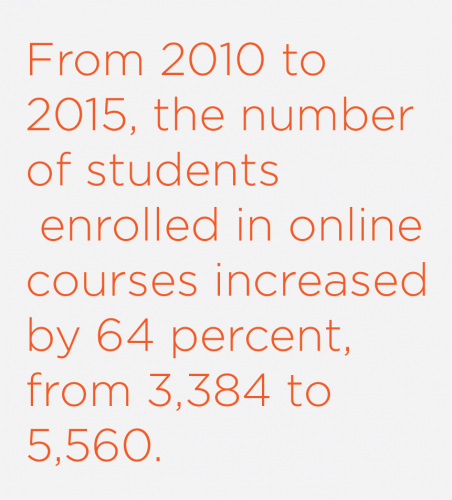WEST LAFAYETTE — Purdue University professor Patricia Hart was a little hesitant about shifting her traditional, in-person Spanish film class to an entirely online course.
She needed to make the class more accessible to students with busy schedules, but also didn’t want to compromise the quality of the class.
So, Hart sought the expertise of Purdue’s Digital Education office to help transform the class into something beyond a typical online lecture with multiple choice tests.
By the end of the May-term course, she was hooked.
“It ended up really exceeding my expectations,” said Hart, who will be teaching the same class online this May. “I was honestly amazed at how well it worked and how high quality the discussions were.”
Recently, more Purdue professors like Hart are making the leap to online education as a way to be more flexible for students. Some are finding the new digital techniques create a better learning experience.
“We always want to do what’s best for students,” said Jon Harbor, director of Digital Education. “And the data show that it is a good way for students to learn.”
The number of courses offered entirely online at the university rose by 18 percent from the 2014-2015 academic year to last school year, from 342 to 404 classes, according to data from the Office of Institutional Research, Assessment, and Effectiveness.
More Purdue students are also shifting toward digital learning. There were more than 18,000 student enrollments in online courses last year, up from 14,750 the previous year, OIRAE data show.
Online education helps undergraduate students complete required courses so they can graduate on time, allows graduate students outside of the area to earn a Purdue degree and keeps the university on the cutting edge of technology in higher education, Harbor said.
Online versions of undergraduate courses are also offered at the same cost as their traditional counterparts, he said.
But it takes a lot of time and effort for a professor to convert a class to online or incorporate more technology in the classroom, and many don’t know where to begin.
That’s where Harbor’s office steps in. Digital Education works with and provides funding to faculty members to help them completely transform their courses. The office typically takes on courses that enroll a large number of students.
A professor is then paired with members of the ITaP instructional design team, who help the instructor construct the class and suggest specific online teaching tools that would be a good fit for the course.
Hart said they allowed her to use a studio at Purdue with a green screen to record her lectures. With the green screen, she was able to incorporate film clips and internet sources into the lectures.
“You can have yourself in front of a film and point out things,” Hart said, as an example.
The extra effort to transform a class specifically for online can make a big difference for students.
Purdue public relations senior Lynn Galliher took an online nutrition course a couple of years ago to fulfill a core science requirement, but said she didn’t have a good experience because she felt disconnected to the class.
The projects were very easy and she didn’t feel engaged, Galliher said.
“I didn’t take any more (online classes) because it was hard for me to keep myself on track and I felt like it was kind of pointless,” she said.
Hart suggests professors reach out for help if they’re considering making the switch to ensure it’s a good fit for the course and that they create the best online version possible.
“If you want to do it, get help with Digital Education,” she said.
The office is currently accepting proposals from high demand undergraduate courses that serve large numbers of students in a variety of majors.
[Source:-Sun Commercial]

